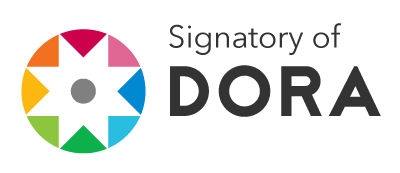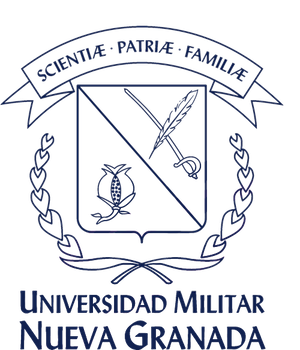Condiciones de desarrollo del organismo modelo, Tribolium Castaneum Herbst (Coleoptera: Tenebrionidae)
Abstract
Tribolium castaneum, is a beetle widely used in research as a model organism in studies genetics, development, and toxicology. In this paper, we studied the development cycle of the insect to the conditions of 26±2 °C temperatures, with a diet of ground/flakes oatmeal. It has been widely reported that the environmental conditions and diet affects the development of the insect. The results obtained are presented as the mean ± standard deviation, with a value of p<0.05 to be considered with significant differences. We found that the egg stage has duration of 6-7 days, the larvae can reach up to eight instars and can move the pupal period from the fourth instar. The pupa stage has duration of 7±1.7 days. The cycle of development of the immature stages of the insect is 46-81 days, with an average of 65 days. Adults have a size of 3.6±0.0 x 1.1±0.0 mm. Therefore, the development of T. castaneum from egg to larva, then to pupa and finally to adult is affected by the conditions of temperature, type of food, humidity, and individual characteristics. Tribolium castaneum is an insect of complete metamorphosis (holometabolous) with a period of development of the immature stages in the range of 46-81 days, and up to eight instars in our laboratory conditions.
Downloads
References
Y. Suzuki, J.W. Truman, L.M. Riddiford, “The role of Broad in the development of Tribolium castaneum: implications for the evolution of the holometabolous insect pupa”, Development, vol. 135, pp. 569-577, 2008.
S.J. Brown, T.D. Shippy, S. Miller, R. Bolognesi, R.W. Beeman, M.D. Lorenzen, G. Bucher, E.A. Wimmer, M. Klingler, “The Red Flour Beetle, Tribolium castaneum (Coleoptera): A Model for Studies of Development and Pest Biology”, Cold Spring Harbor Protocols, 2009: pdb.emo126.
M.B. Devi, N.V. Devi, “Biology of rust-red flour beetle, Tribolium castaneum (Herbst) (Coleoptera: Tenebrionidae)”, Biological Forum – An International Journal, vol .7, pp. 12-15, 2015.
L. Wang, S. Wang, Y. Li, M.S.R. Paradesi, S.J. Brown, “BeetleBase: the model organism database for Tribolium castaneum”, Nucleic Acids Res, vol. 35, pp. D476-D479, 2007.
B. Altincicek, E. Knorr, A. Vilcinskas, “Beetle immunity: Identification of immune-inducible genes from the model insect Tribolium castaneum”, Dev Comp Immunol, vol. 32, pp. 585-595, 2008.
C. Goodman, D. Stanley, J. Ringbauer, R. Beeman, K. Silver, Y. Park, “A cell line derived from the red flour beetle Tribolium castaneum (Coleoptera: Tenebrionidae)”. In Vitro Cellular & Developmental Biology – Animal, vol. 48, pp. 426-433, 2012.
TGSC, Tribolium Genome Sequencing Consortium. “The genome of the model beetle and pest Tribolium castaneum”. Nature, vol. 452, pp. 949-955, 2008.
S. Grünwald, I. Adam, A.M. Gurmai, L. Bauer, M. Boll, U. Wenzel, The red flour beetle Tribolium castaneum as a model to monitor food safety and functionality. Pages 111-122 in Vilcinskas A, ed. Yellow Biotechnology I, vol. 135 Springer Berlin Heidelberg, 2013.
J. Savard, D. Tautz, M. Lercher, “Genome-wide acceleration of protein evolution in flies (Diptera)”, BMC Evol Biol, vol. 6, pp. 7, 2006.
J. Campbell, C. Athanassiou, D. Hagstrum, K. Yan Zhu, “Tribolium castaneum: A Model Insect for Fundamental and Applied Research”, Annual Review of Entomology, vol. 67, no. 1, pp. 347-365, 2022.
R.W. Beeman, S. Haas, K. Friesen, “Beetle wrangling tips”. (An Introduction to the Care and Handling of Tribolium castaneum) [internet], 2013. Disponible: 24 March 2023; http://ars.usda.gov/Research/docs.htm?docid=12892.
F.H. Arthur, B.A. Hale, L.A. Starkus, A.R. Gerken, J.F. Campbell, T. McKay, “Development of Tribolium castaneum (Herbst) (Coleoptera: Tenebrionidae) on rice milling components and by-products: Effects of diet and temperature”, Journal of Stored Products Research, vol. 80, pp. 85-92, 2019 [internet], doi: https://doi.org/10.1016/j.jspr.2018.11.001.
R. Ripa, “Biología de tres Coleóptera que atacan granos almacenados (Tenebrionidae, Cucujidae, Bostrichidae)”, Revi Per Entom, vol. 14, pp. 290-296, 1971.
G.J. Daglish, “Fecundity of wild Tribolium castaneum (Herbst) from southeast Queensland, Australia”, J Stored Prod Res, vol. 41, pp. 115-119, 2005.
N. Pajaro-Castro, K. Caballero-Gallardo, J. Olivero-Verbel, “Toxicity and expression of oxidative stress genes in Tribolium castaneum induced by toluene, xylene, and thinner”, Journal of Toxicology and Environmental Health, Part A, vol. 82, no. 1, pp.28-36, 2018 [internet], doi: 10.1080/15287394.2018.1546245.
K. Caballero-Gallardo, J. Olivero-Verbel, E.E. Stashenko, “Repellent activity of essential oils and some of their individual constituents against Tribolium castaneum Herbst”, J Agric Food Chem, vol. 59, pp. 1690-1696, 2011.
K. Caballero-Gallardo, N. Pino-Benitez, N. Pajaro-Castro, E. Stashenko, J. Olivero-Verbel, “Plants cultivated in Choco, Colombia, as source of repellents against Tribolium castaneum (Herbst)”, J Asia Pac Entomol, vol. 17, pp. 753-759, 2014.
R. Hernandez-Lambraño, N. Pajaro-Castro, K. Caballero-Gallardo, E. Stashenko, J. Olivero-Verbel, “Essential oils from plants of the genus Cymbopogon as natural insecticides to control stored product pests”, J Stored Prod Res, vol. 62, pp. 81-83. 2015.
N. Pajaro-Castro, K. Caballero-Gallardo, J. Olivero-Verbel, “Toxicity of Naphthalene and Benzene on Tribollium castaneum Herbst”, Int. J. Environ. Res. Public Health, vol. 14, pp. 667, 2017 [internet], doi:.https://doi.org/10.3390/ijerph14060667.
N. Pajaro-Castro, K. Caballero-Gallardo, J. Olivero-Verbel, “Neurotoxic Effects of Linalool and β-Pinene on Tribolium castaneum Herbst”, Molecules, vol. 22, pp. 2052, 2017 [internet], doi:. https://doi.org/10.3390/molecules22122052
R.W. Howe, “The effect of temperature and humidity on the rate of development and mortality of Tribolium castaneum (Herbst) (Coleoptera, Tenebrionidae)”, Ann Appl Biol, vol. 44, pp. 356-368, 1956.
Q.L. Ming, C. Cheng, “Influence of nutrition on male development and reproduction in Tribolium castaneum”, J Econ Entomol, vol. 105, pp.1471-1476, 2012.
M. Shafique, M. Ahmad, M. Chaudry, “Feeding preference and development of Tribolium castaneum (Herbst.) in wheat products”, Pakistan J Zool, vol. 38, pp. 27-31, 2006.
F.H. Arthur, S.R. Bean, D. Smolensky, A.R. Gerken, K. Siliveru, E.D. Scully, N. Bake, “Development of Tribolium castaneum (Herbst) (Coleoptera: Tenebrionidae) on sorghum milling fractions”, Journal of Stored Products Research, vol 87, pp 101606. 2020.
Q.L. Ming, C. Cheng, “Influence of nutrition on male development and reproduction in Tribolium castaneum”, J Econ Entomol, vol. 105, pp.1471-1476, 2012.
M. Shafique, M. Ahmad, M. Chaudry, “Feeding preference and development of Tribolium castaneum (Herbst.) in wheat products”, Pakistan J Zool, vol. 38, pp. 27-31, 2006.
L. Li, R.T. Arbogast, “The effect of grain breakage on fecundity, development, survival, and population increase in maize of Tribolium castaneum (Herbst) (Coleoptera: Tenebrionidae)”, J Stored Prod Res, vol. 27, pp. 87-94, 1991.
P.W. Flinn, J.F. Campbell, “Effects of flour conditioning on cannibalism of T. castaneum eggs and pupae”.Environ Entomol, vol. 41, pp. 1501-1504, 2012.
B.C. Leelaja, Y. Rajashekar, S. Rajendran, “Detection of eggs of stored-product insects in flour with staining techniques”, J Stored Prod Res, vol.43, pp. 206-210, 2007.
M.B. Devi, N. Devi, “Biology of rust-red flour beetle, Tribolium castaneum (Herbst) (Tenebrionidae: Coleoptera)”, Indian J Entomol, vol. 77, pp. 81-82, 2015.
R. Schröder, A. Beermann, N. Wittkopp, R. Lutz, “From development to biodiversity—Tribolium castaneum, an insect model organism for short germband development”, Dev Genes Evol, vol. 218, pp. 119-126,2008.
J.N. Shukla, S.R. Palli, “Sex determination in beetles: Production of all male progeny by Parental RNAi knockdown of transformer”, Sci Rep, vol. 2, pp. 602,2012.
Omkar, Pests and Their Management. In: Omkar (eds) Pests and Their Management. Springer, Singapore, 2018. Doi: https://doi.org/10.1007/978-981-10-8687-8_1.

Copyright (c) 2023 Revista Facultad de Ciencias Básicas

This work is licensed under a Creative Commons Attribution-NonCommercial-NoDerivatives 4.0 International License.











